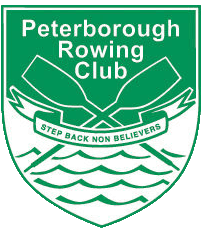KEY Safety INFORMATION
Here you will find key safety-related information: the PRC Safety Policy, Traffic Pattern Map, and RCA online modules that relate to safety on and off the water, and RCA’s safe sport manual that relates to interpersonal safety for all.
PRC Safety Policy
Some highlights
All coach/safety boat operators must wear a PFD and attach the motor kill switch
All boaters must obey the traffic pattern
Be aware of swift water rules. If the water is “swift” then launch southbound and dock northbound
Be aware of cold water rules. Crew boats must be accompanied by a coach boat. Singles and doubles can row with a buddy and coach permission
Rowers must take a PFD if going out unaccompanied by a coach boat or safety boat
Rowing in the dark
Rowing in the dark can be especially hazardous. No PRC rowing is to occur earlier than 1 hour before sunrise, and all boats must return to the dock by sunset. Shells being used in the dark within 30 minutes of sunrise or sunset must have visible navigation lights consisting of a white stern light and a red/green bow light.
Given the structured environment of Trent University Rowing, PRC has arrived at the following protocol based on considering both the hazards of rowing in the dark and the need to minimize collisions on the course.
From October 1, during the TURC rowing season:
Land conditioning and on-land coaching will occur before the on-water component of each practice.
Novice coxed crews only, with a dedicated (one-on-one) coach boat remaining less than 25 m away, shall launch and dock in one flight, launching between 6:20-6:30 am
JV/Varsity boats & non-coxed novice boats, with an accompanying coach boat (will avoid supervising more than 3 boats), shall launch and dock in one flight, launching between 6:40-6:50 am
These flights launch at these times to mitigate the risk of collisions.
The only allowed exceptions to these times are delays due to safety considerations such as stormy weather.
Additional recommendations
There are many things we can do beyond the strict requirements of our policy to increase safety when on and off the water.
Wear hi-vis clothing. Even a hat will help other boats to see you.
Hot weather can be just as dangerous as rowing in the cold. Wear a hat and sunscreen. Drink lots of water, including salts as needed. Keep an eye on other rowers.
Rowing shells are tippy. Even the best rower occasionally falls in. Tip training is a great way to practice and be prepared. Everyone is encouraged to attend the annual tip training workshop.
